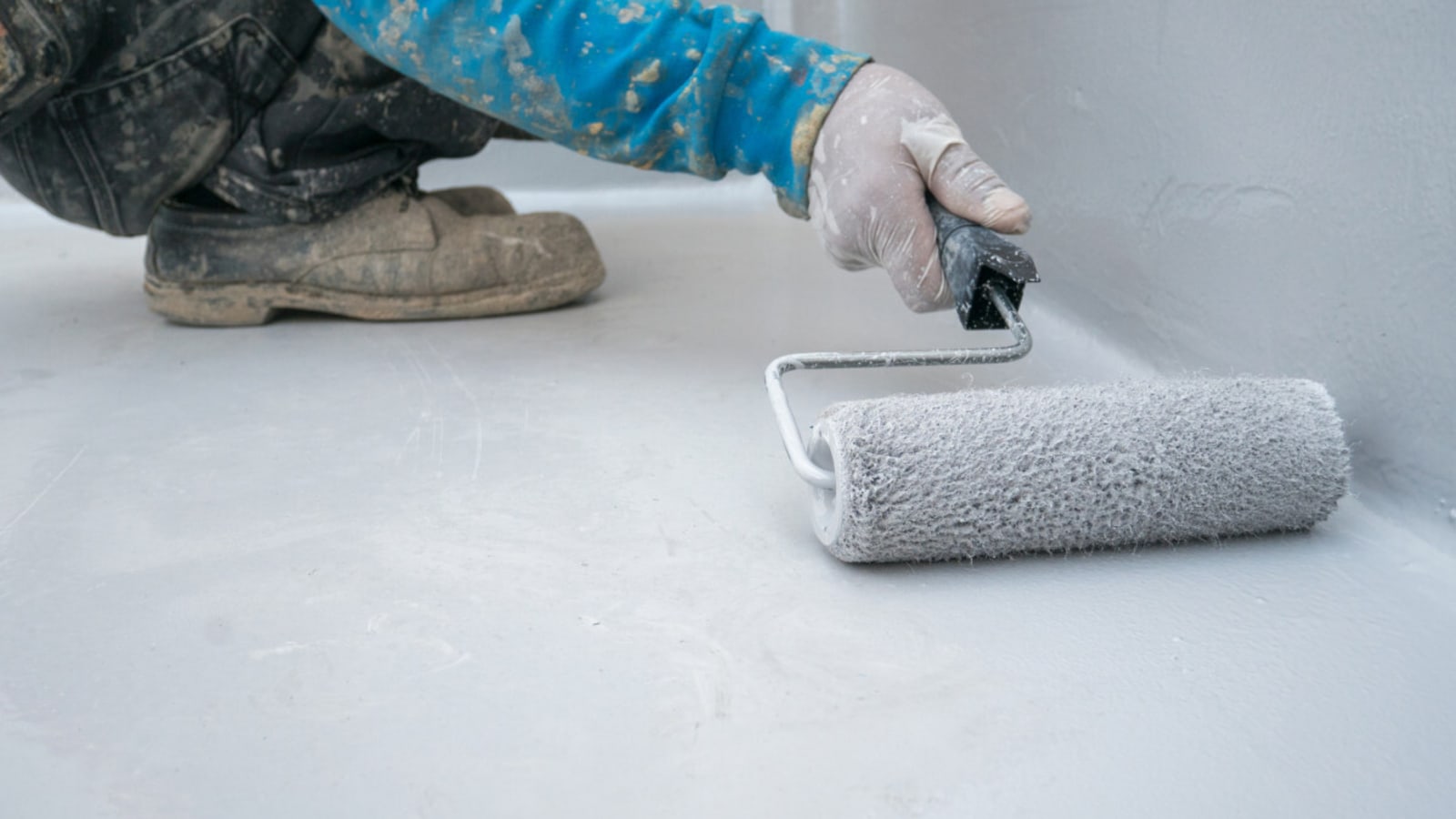
Basements are notorious for moisture issues, from musty smells to visible water seepage spots. If you’ve noticed any signs of excess moisture, you might be wondering if sealing the concrete floor is the simple solution you need. While sealing can be an effective solution in some situations, it’s rarely the only step required. Moisture related issues in a basement are often a more complex problem, influenced by factors like ground water, ventilation, and drainage. To understand if sealing your basement floor is enough, let’s explore what it can do, its limitations, and what other solutions might be necessary.
How Sealing a Basement Floor Helps with Moisture
Sealing your basement floor is a preventative measure, but it’s not a one-size-fits-all fix.
A concrete basement floor is naturally porous. It absorbs and transfers moisture from the ground below. Applying a sealant can block some of this moisture and even prevent minor leaks or water vapor from rising into the space. This can reduce humidity levels and protect the basement from small amounts of water infiltration. Sealing can also help prevent stains, cracks, and growth of mold or mildew.
All that said, it’s important to recognize what sealing cannot do. If your basement experiences significant excess water problems, such as flooding or pooling water, a sealant won’t stop it and keep your basement dry. In those cases, sealing is more of a Band-Aid than a solution. To know if sealing is enough, start by figuring out where the moisture is coming from.
Why Moisture in Basements Is Often a Bigger Problem
Moisture issues in basements often go beyond what sealing can handle.
Basements are surrounded by soil, and the moisture content in the ground is constantly trying to find its way into the basement space. A poor perimeter drain around your foundation, high groundwater levels, or cracks in foundation walls and concrete slab floors can allow water to seep in. If your basement isn’t properly waterproofed, sealing the floor won’t fix these bigger problems.
Common causes of basement moisture include:
- Poor exterior drainage, such as clogged gutters or downspouts.
- Improper grading around the house, allowing water to flow toward the foundation.
- Higher than normal water table
- Hydrostatic pressure pushing water through basement walls or floors.
- Basement floor cracks or foundation cracks.
Sealing might be effective for reducing light dampness or humidity; however, for persistent issues, other solutions like a sump pump, French drain, or exterior waterproofing may be required.
When to Combine Sealing with Other Solutions
Sealing works best when combined with additional moisture control strategies.
If you’re dealing with minor moisture content, like a slightly humid basement, sealing the floor might be enough to improve the environment. But if there’s visible water, pooling, or consistent dampness, it’s time to consider a more comprehensive approach.
Here are some additional steps that can help address basement moisture issues:
- Fixing drainage problems: Make sure gutters and downspouts direct water at least 6 feet away from your foundation. Adjust landscaping to slope away from the house.
- Sump pit and sump pump installation: This device can pump water out of your basement during heavy rain or rising ground water.
- Adding a dehumidifier: Reducing indoor humidity levels can help prevent condensation and keep the basement air drier.
- Using vapor barriers: A vapor barrier under the floor or on walls can help block moisture from seeping through.
- Repairing minor cracks: Fill any foundation or floor cracks with an appropriate sealant to stop water intrusion. Larger cracks may need to be assessed by a professional for structural damage and what foundation repairs may be needed.
FAQ
Can I seal my basement floor myself, or should I hire a professional?
Sealing your basement floor can be a DIY project if you’re dealing with minor moisture levels. Products like epoxy concrete sealers or concrete waterproofing coatings are readily available at hardware stores and come with clear instructions. Before applying, the floor must be clean, dry, and free of cracks. If your basement has significant moisture problems or if you’re unsure about the source of the moisture, it’s a good idea to consult a professional. They can assess the situation and recommend the best solution.
How do I know if my basement needs more than just sealing?
If you notice persistent moisture damage, water pooling, mold growth, or a damp musty smell that doesn’t go away, sealing alone is unlikely to solve the issue. Other red flags include visible basement floor cracks or cracks in your concrete walls, foundation damage, peeling paint, or watermarks. You can also try a simple test of moisture levels: tape a piece of plastic to the floor and leave it for 24-48 hours. If condensation forms under the plastic, water vapor is seeping through the concrete, and you may need additional waterproofing solutions.
More must-reads:
- Rockies will be without a key front-office member moving forward
- Former first overall pick retires from NHL after 17 seasons
- The 'Last 100-yard rusher by NFL team' quiz
Breaking News
Trending News
Customize Your Newsletter
 +
+
Get the latest news and rumors, customized to your favorite sports and teams. Emailed daily. Always free!








